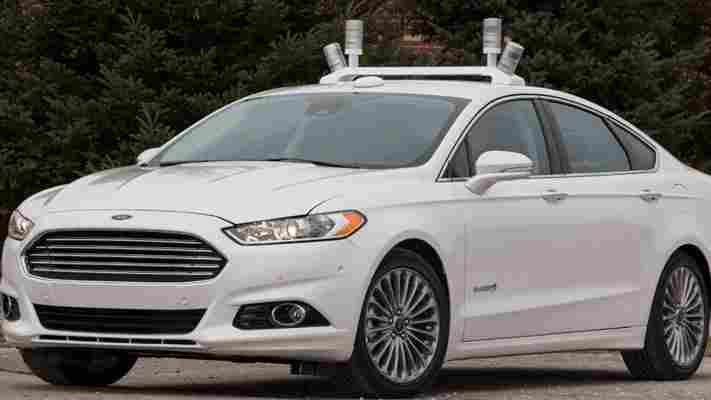Review: Neat’s $99 Widget is a crazy-looking no-frills microphone, but it sounds awesome
With every passing generation, computers get better displays, processors, speakers, and more.

Microphones though? Not so much.
That means that if you have any interest in documenting anything involving sound – podcasting, vlogging, singing – you’ll need a serious upgrade. And while podcast mics exist aplenty, few are as immediately eye-catching as Neat Microphone’s Widget series, a set of vibrant condenser microphones.
The microphones come in red, green, and blue, each features a totally different shape. All three feature saturated colors and look ridiculously different from everything else out there, and I got my hands on the blue and yellow Widget C. I can see the look being polarizing, but I personally love all three designs.
This is probably where I should mention that these microphones are about more than their quirky looks. It may sound like a newfangled startup with low prospects, but Neat is actually a subset of the Gibson brand (yes, that Gibson ) and has some serious audio chops behind it.
Ever heard of Blue ? They make some of the most popular plug-and-play microphones around (and have recently delved into headphones a bit too). You may want to consider, then, that Neat was created by Blue’s two co-founders after leaving that company in 2013; these people know how to make a good microphone, and have done so for decades.
Returning to the hardware for a bit, pictures don’t do the microphones’ build quality justice.
In an era where virtually every premium device has to be made from metal and glass, we assume vibrant colors mean plastic construction. That’s not the case here: most of the Widget C is solid aluminum, except for the piece where the stand attaches to the microphone head. It feels like it can stand years of abuse – though it probably not much, considering it’s meant to be stationary on your desk.
Speaking of, the Widget C is larger than you probably expect it to be from the photos. The he base has an of 8.3-inch diameter and it stands at 15.4 inches tall. The size wasn’t an issue for me, but it might be worth noting if you’re limited on desk space.
Though outwardly eccentric, the Widget is functionally very simple. The only control point is a knob that allows you to raise and lower the microphone head, and the only port is for the included USB cable.
That also means you’re not getting any fancy features like different pickup patterns or gain adjustment. Instead, it tries to deliver professional-grade sound all-in-one package, and it comes pretty darn close.
In a word, they sound great. Any external mic sounds better than your average laptop microphone, of course, but the Neat team’s audio heritage comes through in the recordings:
That’s partly because accessories like a removable pop filter and a shock mount are integrated into the microphone itself. If you’re not familiar, most podcast mics tend to suffer from ‘pop’ sounds if not fitted with a filter, but the integrated one here meant that wasn’t a concern unless I spoke from about an inch or less away. Meanwhile, the stand did a decent job of dampening out any thumps from moving things on my desk or typing away on my keyboard while recording.
They’re not quite as good as high-end equipment, but being built-in means the average user won’t need to spend extra cash to get the professional sound they’re looking for or waste time adjusting the microphone’s placement just right. As someone who’s spent hours adjusting microphones to get them to sound ‘just right,’ it’s a relief to be ready to record with little-to-no fiddling.
Spec-wise, Neat uses custom condenser capsule with a standard cardoid pickup pattern , meaning it best records whatever’s directly in front of it, is okay with sounds to its sides and ignores things directly behind it. The microphone samples at 96 kHz at 24 bits, which probably higher than anyone buying this will ever need, but also better than some popular competition like the Blue Yeti or Snowball .
It particularly shined for vocals – spoken or sung – which seems to be its primary intended use any way. It has a very low noise floor (AKA silent moments don’t sound grainy), and speech is full-bodied; there’s none of that tinny sound you expect from your laptop’s mic. In fact, bass frequencies might be a little more emphasized than I prefer, but depending on your tastes, that’s not necessarily a bad thing.
It also fared very well while recording some sloppy guitar-playing. It’s not ideal for recording instruments at studio quality due to its large form factor, but for acoustic or casual music recordings for your YouTube videos, it will sound just fine.
That said, as much as I appreciate the high quality, no frills functionality, the lack of a headphone jack to laglessly monitor your recording as it happens is a big bummer for something this size.
Neat’s eccentric design tastes somewhat belie its microphones’ strong fundamentals. While it may not get you all the features competitors in the price range offer – and I still mourn the lack of a headphone jack – if you want an affordable microphone that will help you make professional-sounding recordings out of the box, you can’t go wrong with the Widget. The retro aesthetic is just a neat bonus.
➤ Neat Microphones Widget
SCUF’s Vantage PS4 controller: Shades of amazing, with just a touch of awkward
Update: Shortly after this review SCUF released a firmware update for the Vantage controllers. We’re happy to say that the issues we mention here have been resolved, and that the Vantage line is working as intended. It’s still not our favorite SCUF controller — the side button placement is awkward, it doesn’t feel as luxurious as some other SCUF controllers, and we find the interior paddles difficult to reach — but we’re comfortable recommending it for anyone that’s looking for a change from models based on the PS4 controller’s OEM design. Controllers are a personal thing. It’s quite possible you’ll love it.

For anyone experiencing the issues we describe below, you can update your firmware here . In our experience, it’s well worth the trouble.
I love SCUF controllers. Or, more accurately, I love all of them but this one.
As the proud owner of two of the Infinity4PS Pro models, it was always an easy recommendation to make for anyone looking to drop their hard-earned cash on a premium product. I’m a gamer, and that tag comes with certain responsibilities — chief among them is spending money on things I absolutely do not need. So when the opportunity came up to give the Infinity4PS Pro a try last year, I jumped at it, even going so far as to recommend it in our holiday gift guide .
That model was, and unfortunately still is, the best controller I’d ever picked up for the PS4. And it it’s still my daily driver. At this point I scoff at the idea of using an OEM model from Sony, or any other less-than-premium offering. I have taste, after all.
Needless to say, I was more than happy to try out its newest option, Vantage, a PS4 exclusive built from the ground up. From the ground up, in this case, isn’t just marketing speak. SCUF actually built a controller that didn’t rely on the OEM design, like in previous models. The finished product looks more like the Xbox One Elite controller, in fact, than a Sony product. This is a good thing. Sony, after all, doesn’t offer an ultra-premium model and gamers are none to pleased about it.
Before it shipped, SCUF asked me to customize it to my hearts’ content. I obliged. Believe me when I say that nearly everything is customizable. You’ll pick the faceplate color, the anti-friction rings, rear triggers, and even multiple thumbpad options, including height, shape and color.
It arrived days later. The packaging was gorgeous, offering your first glimpse of just how premium a product your new $200 controller is. Inside there are multiple replacement accessories, a manual, a heavy-duty USB cable for connecting it to your PS4, and a nice carrying case for travel. Aside from getting a grey-ish looking model faceplate rather than the white one I ordered, everything was coming up roses so far.
On initial inspection, Vantage feels great in the hand. It has a nice weight to it, though it doesn’t feel quite as premium as the Infinity model I’d grown accustomed to.
The Infinity, aside from being $50 cheaper, just feels more premium. It’s a bit heavier, has a nicer finish (somewhat rubberized, though glossy and smooth as opposed to the plastic feel of the Vantage faceplate), and just feels like a better value for a controller that offers much of the same functionality as the more expensive upgrade. It too is highly customizable. The only noticeable difference — aside from am a more premium feel — in fact, is the lack of the Vantage’s two side buttons and an OEM-like thumbpad placement (as opposed to the staggered, Microsoft-like Vantage positioning).
As for performance, it’s hard to say. Initially it felt great, playing sports games like Golf Club 2019, and NBA 2k19. After switching to shooters, however, I noticed a disturbing flaw in the thumbpad that made both lose sensitivity in certain areas. On a full pull, meaning all the way to any side, they worked fine. More minor adjustments, the type needed to excel in first person shooters, for example, left dead zones where the on-screen cursor was completely unresponsive. Dealbreaker.
The woes didn’t end there. After plugging the controller into my PS4 to ensure it was fully charged, I was disappointed to find out that it wouldn’t turn the PS4 on when you pressed the center button, like my other SCUF controllers and OEM models. Figuring I was doing something wrong, I consulted Google, only to find out that others were struggling with the same problem. Some blamed it on Bluetooth connectivity issues, and while I’m not sure that was the cause of mine, it certainly makes sense.
Programming the additional side buttons or bottom triggers was easy enough, although the positioning was a tad problematic. The side buttons caused a lot of accidental presses as that’s where my hand naturally rests when using the controller.
The triggers were equally odd, a problem the Infinity shares. While the closer trigger, the larger one, is easy to reach, the other is practically unusable. It’s a stretch to reach the second set of triggers, and I can’t see any use case that makes sense to completely alter the way you hold the controller. Especially once you consider how often you’ll have to program it.
That’s right, the triggers, as well as the additional buttons, don’t store your button mapping. Meaning, each time you turn on the PS4, you’ll have to reconfigure the buttons. It gets old, fast. Eventually I just abandoned it and played with the default buttons, no remapping.
The only thing I did like about SCUF’s Vantage PS4 Controller was that battery life was excellent. I averaged two-to-three days of play time as opposed to the six-to-eight hours I’d get on an OEM controller. Infinity, though, offers excellent battery life as well.
Overall, I should be able to recommend Vantage. It should offer a highly customizable step up from OEM performance, and offer hardcore gamers great value for the money. It doesn’t.
Quite simply, it feels like a product that needs more development time. It’s simply not ready for consumers.
Even then, though, I’m not sure I could recommend a controller that costs more than a PS4 Slim, and almost as much as. PS4 Pro, especially when a better option exists in the cheaper Infinity4PS Pro ($150).
I’m still a SCUF fan, but this one isn’t for me.
Buy the Infinity4PS Pro instead .
Ford’s latest self-driving car patent sounds a little dangerous
Car manufacturer Ford announced earlier this year that it was ramping up its self-driving car testing. What it didn’t mention was that the company is at least looking into the idea of turning those vehicles into mobile movie theaters.

Yes, Ford has filed a patent for an “ Autonomous Vehicle Entertainment System ,” as spotted by Forbes .
The document shows a car that transforms into a movie theater while the car is driving itself, with a projector screen blocking the windshield and the front seats slid back so you can relax and enjoy the ride.
Should the driver need to actually drive at any point during the journey, the screen will disappear into the car’s roof and a secondary display will take over for passengers in the back.
While this is certainly novel, self-driving cars don’t yet signal that drivers can take their eyes off the road. Sure, they can relax a little, but as most other car manufacturers have pointed out , drivers still need to have their wits about them.
Of course, driverless cars have proven to be less prone to accidents in testing than humans, but would you really feel comfortable letting a screen block your windscreen while traveling on the open road?
If nothing else, driverless cars can’t account for other dangerous drivers on the road and having a movie blocking the main view and seats reclined will no doubt slow down the reaction time in an emergency when the driver needs to take over.
➤ Autonomous vehicle entertainment system [US Patent and Trademark Office via Forbes ]
